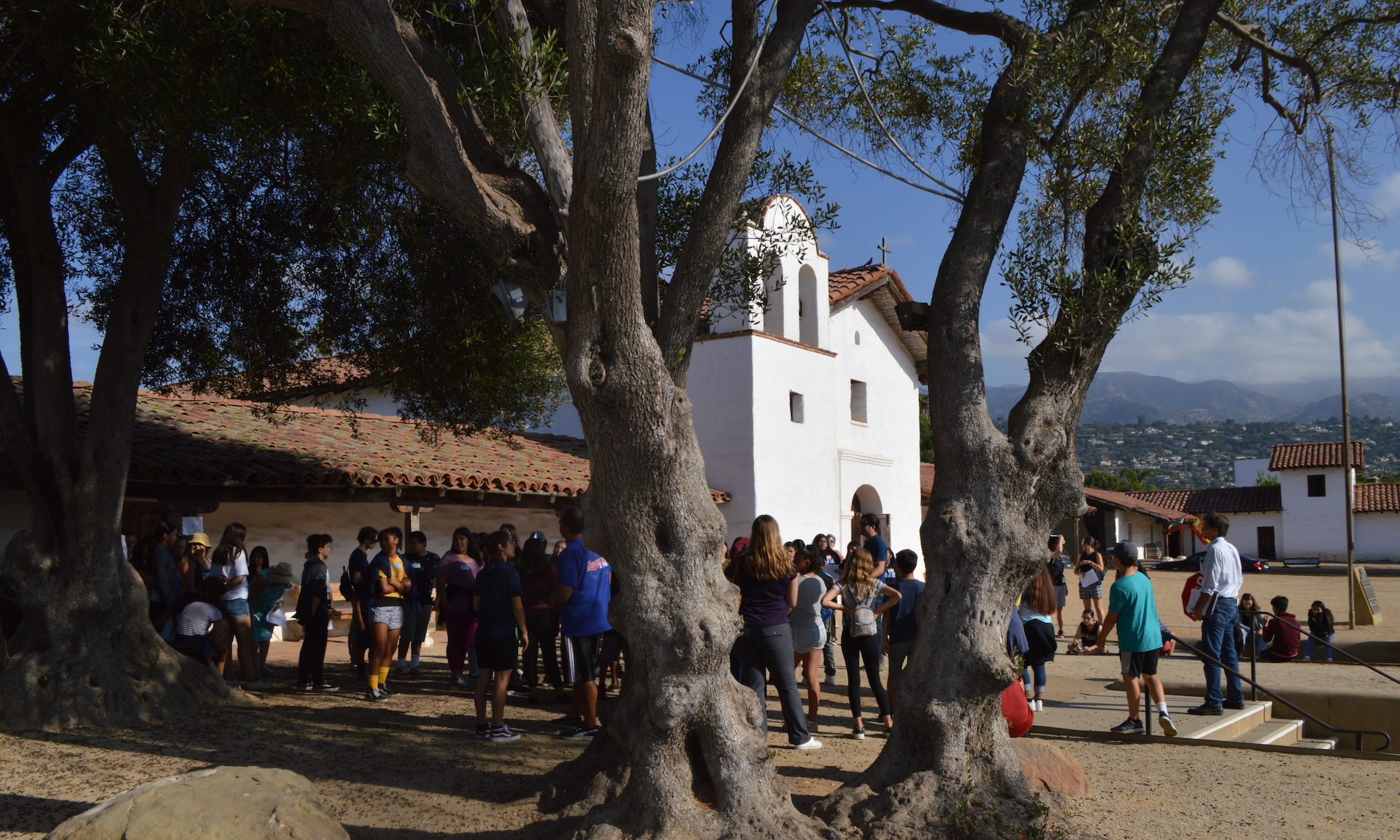Upcoming Project!
In her role as a Public Humanities Fellow of the Interdisciplinary Humanities Center at UCSB, Emma John is spearheading a new project that reexamines the legacy of “the first white settlers” to Santa Barbara commemorated by two plaques installed at the Santa Barbara Courthouse in the 1930s by the Daughters of the American Revolution (DAR).
Project Introduction:
In the 1930s, the Santa Barbara Daughters of the American Revolution (DAR) placed two plaques at the local courthouse, one honoring the first white men to arrive to the city, and the other honoring the first white women and children. In 2020, in the wake of the murders of George Floyd and Breonna Taylor, members of the city council called for the plaques’ removal, asking why the first white people were honored at all (SOURCE). The plaques have since been quietly removed.
The story of these plaques, from installation to removal, is indicative of larger trends of historical memory and commemoration as it relates to the construction of race in the United States. The Daughters of the American Revolution have been central players in those trends. Founded by women who could trace their lineage to someone who fought in the American Revolution, the DAR has worked tirelessly to preserve a patriotic notion of America, worthy of what they believe their ancestors fought for. In this sense, installing plaques honoring the first white settlers to Santa Barbara is in line with the early twentieth century work of the organization. However, according to the plaques, the first white settlers were Spanish, the men arriving on the expedition of TK and the women and children arriving with the expedition of TK, respectively. This is surprising given the National DAR’s commitment to Anglo-heritage and Protestantism. However, within a specific California context, this commemoration makes more sense. Anglo-American settlers of California quickly appropriated and mythologized the Spanish Empire past, starting in the mid-nineteenth century. Ramona, a TK novel written by Helen Hunt Jackson (born in Amherst, Massachusetts), generated intense interest in Spanish California, spawning mass tourism and an annual festival. This process of myth/history making has been documented by many historians, notably Phoebe Kropp in California Vieja.
Santa Barbara in particular has a complex history of commemoration, especially regarding race and ethnicity. The city was settled on Chumash land in the eighteenth century. Originally a Spanish Presidio, with a Mission following soon after, the city grew throughout the nineteenth century as a small outpost of Alta California. Louise Pubols has documented the Spanish era of Santa Barbara well in Father of All, focusing primarily on the De la Guerra family. Anglo-settlers began arriving in the 1840s, at first trying to marry into prominent Spanish families, and then dispossessing those families of their ranch land through court cases about property deeds. The site of the former Presidio also housed a Chinatown in the late nineteenth century, which gave way to a Japanese enclave, which existed until Executive Order 9066 forcibly removed Japanese people from their homes. While local Santa Barbara history has tended to focus only on the Spanish past, recent efforts by the Santa Barbara Trust for HIstoric Preservation has brought overdue attention to the Chinese and Japanese histories, as well as acknowledging that the city land is rightfully Chumash.
The removal of the DAR plaques is an important part of this recent reckoning with Santa Barbara’s historical memory. However, their absence leaves unanswered questions. For instance, why were they installed in the first place? Whose idea was it, and were they a response to something else? For how much longer would they have remained without a renewed attention to institutional racism brought on by the state-murders of two Black people?
Proposal:
To begin to answer these questions I am proposing a temporary exhibit about the DAR plaques. This exhibit would explain the plaques’ history, as well as raise larger questions about the nature of historical commemoration. This is a timely question as racist statues continue to fall around the United States. This exhibit seeks not only to inform, but to engage the visitor in a dialogue about the greater meaning of the plaques.
